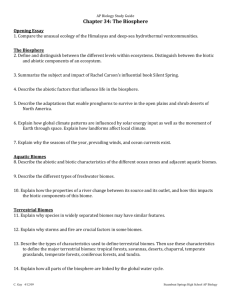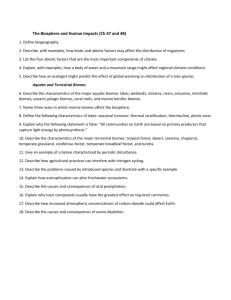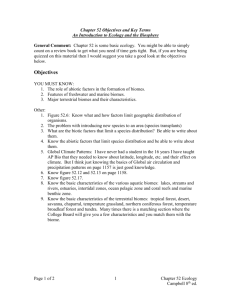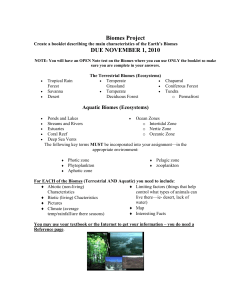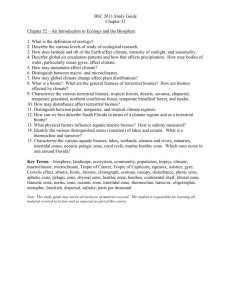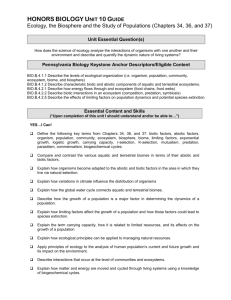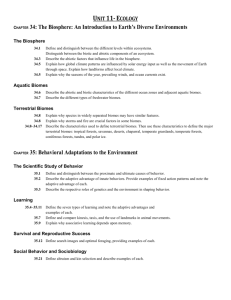File - Mrs. Loyd's Biology
advertisement
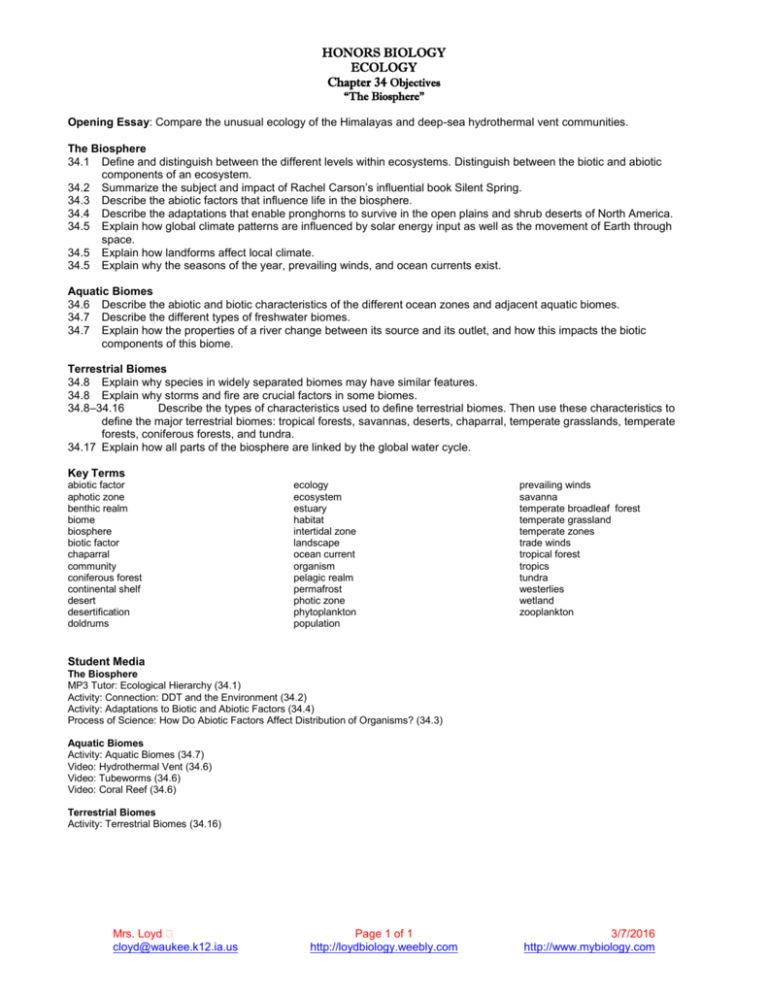
HONORS BIOLOGY ECOLOGY Chapter 34 Objectives “The Biosphere” Opening Essay: Compare the unusual ecology of the Himalayas and deep-sea hydrothermal vent communities. The Biosphere 34.1 Define and distinguish between the different levels within ecosystems. Distinguish between the biotic and abiotic components of an ecosystem. 34.2 Summarize the subject and impact of Rachel Carson’s influential book Silent Spring. 34.3 Describe the abiotic factors that influence life in the biosphere. 34.4 Describe the adaptations that enable pronghorns to survive in the open plains and shrub deserts of North America. 34.5 Explain how global climate patterns are influenced by solar energy input as well as the movement of Earth through space. 34.5 Explain how landforms affect local climate. 34.5 Explain why the seasons of the year, prevailing winds, and ocean currents exist. Aquatic Biomes 34.6 Describe the abiotic and biotic characteristics of the different ocean zones and adjacent aquatic biomes. 34.7 Describe the different types of freshwater biomes. 34.7 Explain how the properties of a river change between its source and its outlet, and how this impacts the biotic components of this biome. Terrestrial Biomes 34.8 Explain why species in widely separated biomes may have similar features. 34.8 Explain why storms and fire are crucial factors in some biomes. 34.8–34.16 Describe the types of characteristics used to define terrestrial biomes. Then use these characteristics to define the major terrestrial biomes: tropical forests, savannas, deserts, chaparral, temperate grasslands, temperate forests, coniferous forests, and tundra. 34.17 Explain how all parts of the biosphere are linked by the global water cycle. Key Terms abiotic factor aphotic zone benthic realm biome biosphere biotic factor chaparral community coniferous forest continental shelf desert desertification doldrums ecology ecosystem estuary habitat intertidal zone landscape ocean current organism pelagic realm permafrost photic zone phytoplankton population prevailing winds savanna temperate broadleaf forest temperate grassland temperate zones trade winds tropical forest tropics tundra westerlies wetland zooplankton Student Media The Biosphere MP3 Tutor: Ecological Hierarchy (34.1) Activity: Connection: DDT and the Environment (34.2) Activity: Adaptations to Biotic and Abiotic Factors (34.4) Process of Science: How Do Abiotic Factors Affect Distribution of Organisms? (34.3) Aquatic Biomes Activity: Aquatic Biomes (34.7) Video: Hydrothermal Vent (34.6) Video: Tubeworms (34.6) Video: Coral Reef (34.6) Terrestrial Biomes Activity: Terrestrial Biomes (34.16) Mrs. Loyd cloyd@waukee.k12.ia.us Page 1 of 1 http://loydbiology.weebly.com 3/7/2016 http://www.mybiology.com

